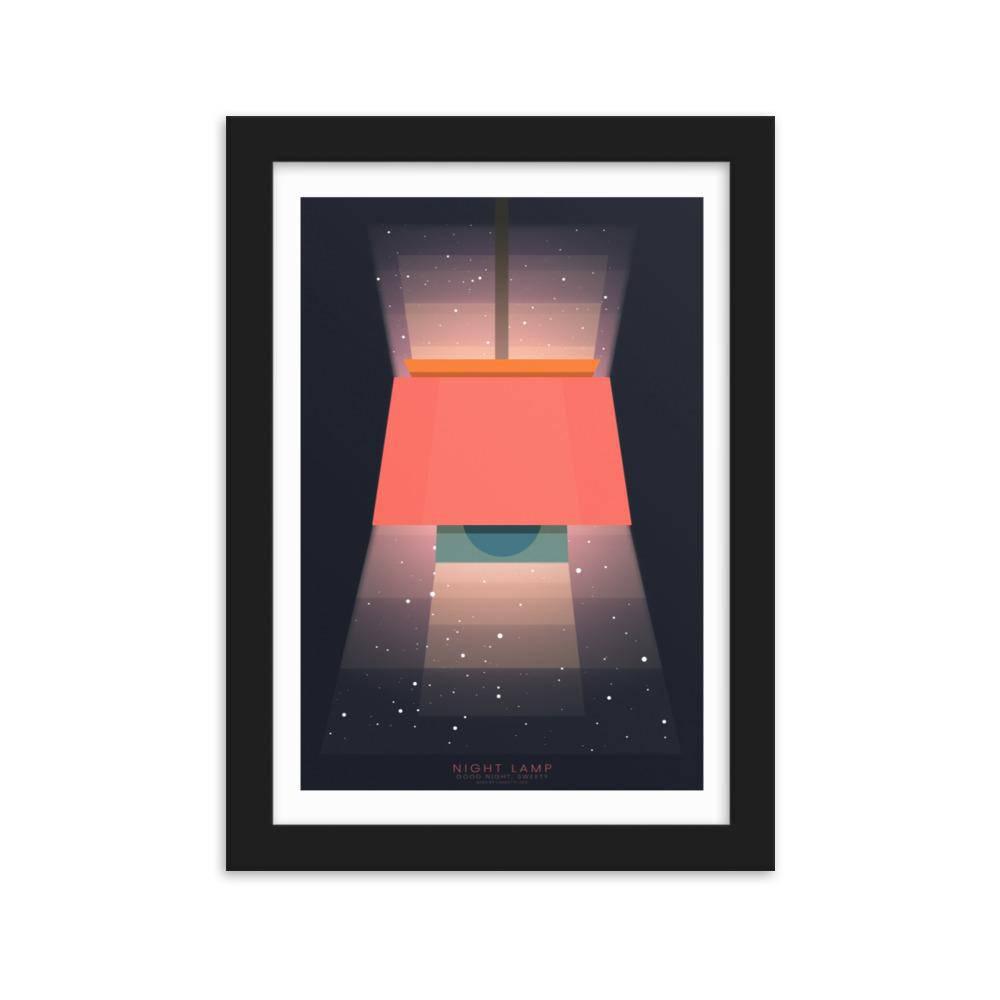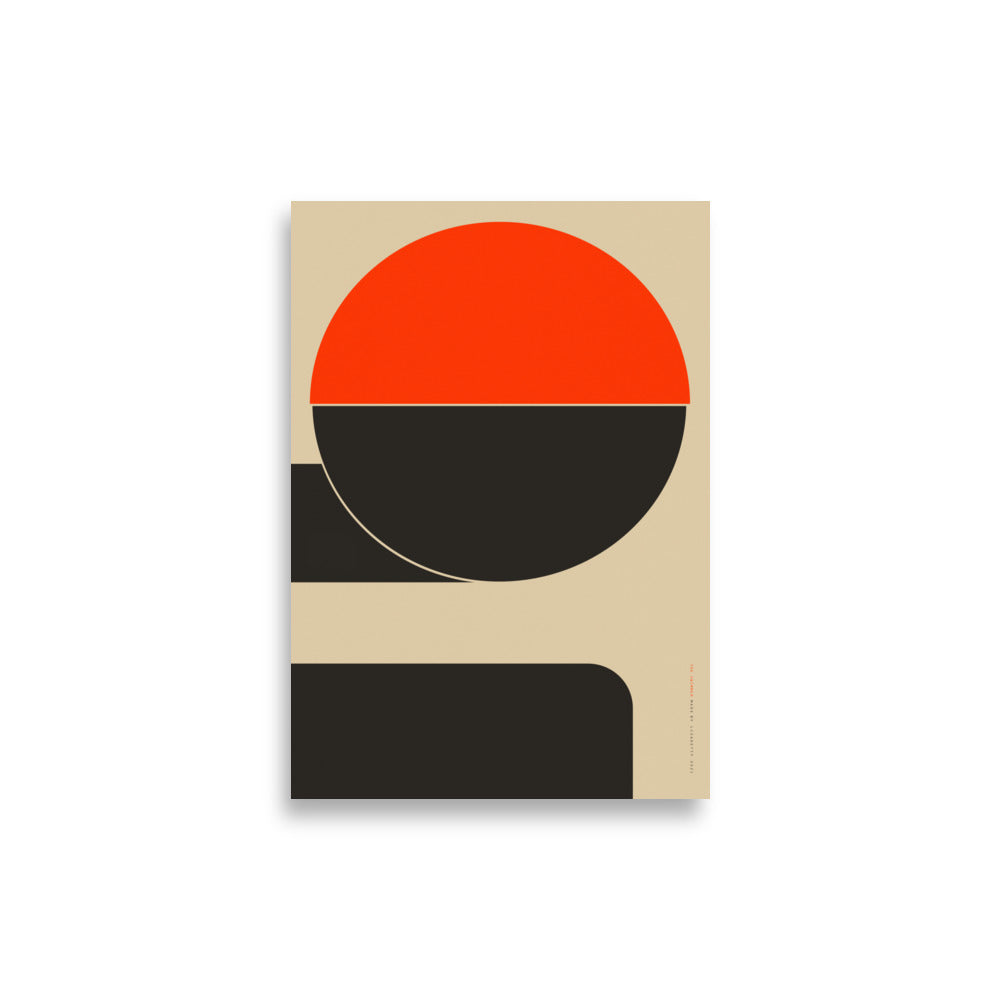
Frame My Print: Make Your Art Look Great
Share
Framing prints can make ordinary artwork look amazing on your walls. Whether you love collecting art or are just starting to decorate your room, it's important to know how to frame prints properly. Let's learn about print framing and answer some common questions to help you make good choices for your artwork.
Key Takeaways
| Aspect | Details |
|---|---|
| Purpose of Framing | Protection, visual enhancement, increased longevity |
| Frame Types | Wood, metal, floating, shadow box |
| Framing Materials | Glass vs. acrylic |
| Matting | Optional, enhances presentation and protects print |
| Framing Options | DIY, professional, frameless |
Why Frame Your Prints?
Framing does many things for your prints. It protects the artwork from damage, makes it look better, and helps it last longer. A good frame can match your room and make your print stand out. Framed posters are a great way to make your walls look nice.
Should you frame a print? Usually, yes! Framing protects your print and makes it look finished. It can turn a simple poster into real art you'd be proud to show in any room. Framing can also help keep the print's colors bright and stop them from fading, especially if you use glass or plastic that blocks UV light.

Types of Frames for Prints
You have several frame options to choose from:
- Wood frames: Classic and work well for most prints
- Metal frames: Modern and sleek, great for new art styles
- Floating frames: Make the print look like it's floating inside the frame
- Shadow box frames: Good for 3D objects or to create depth
The best frame for a print depends on the artwork and what you like. For minimalistic art, a simple black or white frame often works well to let the print shine. Think about the colors in your print and where you'll hang it when picking a frame. For example, fancy gold frames can look good with classical art, while simple silver frames might work better with modern abstract prints.
Framing Materials: Glass vs. Acrylic
When framing your print, you'll need to choose between glass and acrylic for protection. Here's how they compare:
- Glass: Clear and hard to scratch, but heavy and can break
- Acrylic: Light and won't shatter, good for places where things might bump into it
- UV-protective options: Available for both, helps keep print colors bright
- Anti-glare options: Can make the print easier to see in bright rooms
Think about where you'll hang the print and how big it is when choosing between glass and acrylic. For big prints or those in busy areas, acrylic might be safer.

To Mat or Not to Mat?
Matting is the border between the print and the frame. It protects the print from touching the glass and can make it look better. When choosing mat colors, think about matching or contrasting with the print. For large posters, a mat can help balance the look and draw attention to the artwork.
The width of the mat can change how your framed print looks. A wider mat can make the print look more dramatic and bigger, while a narrower mat is more subtle. Using two different colored mats can add depth and make your framed artwork look fancier.
DIY Framing: Step-by-Step Guide
Framing a print yourself can save money. Here's a simple guide:
- Measure your print carefully
- Choose a frame a bit bigger than your print
- Clean the frame and glass well
- Put your print in the frame
- Secure the print with frame backing
For a professional look, use materials that won't damage your print over time. This includes acid-free backing boards and glues that won't harm the print. When handling your print, always use clean, dry hands or wear cotton gloves to keep oils and dirt off the artwork.

Professional Framing: When to Consider It
While framing yourself can be fun and cheap, professional framing is good for valuable or tricky artworks. Experts can make custom sizes, use special materials, and handle delicate pieces carefully. If you're not sure about framing techniques, check out my ultimate guide to fine art printing and framing.
Professional framers have more materials to choose from and can give expert advice on colors, how to keep the print safe, and design options you might not have thought of. They can also handle special items like very big prints, delicate fabrics, or 3D objects that need custom boxes.
Framing Without Glass: Is It Possible?
Yes, you can frame a print without glass! This works well for canvas prints or posters you want to give a more relaxed look. But remember, frames without glass don't protect against dust and damage as much. Some other ways to frame without glass include:
- Stretching canvas prints over wooden frames
- Using magnetic hangers for a modern, simple look
- Using clip frames to easily change prints
- Using floating frames for a cool, modern look
These options are good for temporary displays or for creating a more relaxed feel in your room.
Custom framing usually costs between $50 to $500, depending on size and materials. Online framing services are in the middle, ranging from $50 to $300. For cheaper options, ready-made frames from stores can cost as little as $5 to $35. The prices change based on things like what the frame is made of, the type of glass or plastic used, whether you use matting, and how big the artwork is. Remember, spending more on good framing can protect your art and might make it worth more over time.
Tips for Framing Like a Pro
To frame your prints like a pro:
- Pick frame styles that go well with your print and room
- Hang frames properly so they stay straight
- Think about lighting to show off your framed print
- Dust and take care of your framed artwork regularly
- Group similar frames together to make a cool gallery wall
- Try different frame widths to make things interesting
- Use special materials for valuable or meaningful prints
For ideas, look at my collection of abstract posters to see how different framing styles can make various art types look better. Remember that the frame should make the artwork look good, not take attention away from it.

Conclusion: Making Your Art Look Great with the Right Frame
Framing your prints is an art itself. Whether you do it yourself or get professional help, the right frame can really make your artwork look better and last longer. Remember, there's no one perfect way to frame - the best frame depends on your print, your style, and your room. Try different options and don't be afraid to show your personality through your framing choices.
Think about how your whole room looks when picking frames. A well-framed print can be the main focus or help tie together the colors in your room. Don't be afraid to mix different frame styles for a unique look, or keep the same framing style throughout your home for a consistent feel.
For more framing ideas, check out my line art posters and see how different framing styles can make different art styles look good. Remember that framing isn't just about protection; it's about making your art look great and showing who you are. Happy framing!
